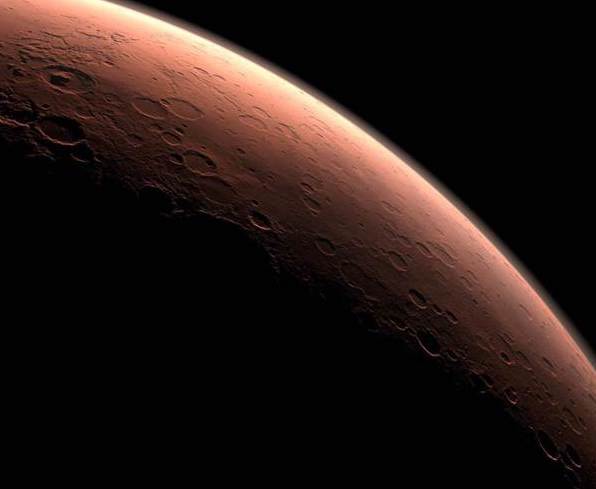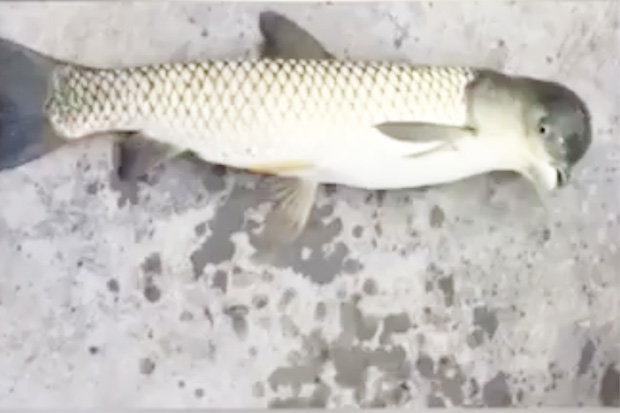Will astronauts traveling to Mars remember much of it? That’s the question concerning University of California, Irvine, scientists probing a phenomenon called “space brain.”
A new study in rodents has found brain damage and cognitive problems six months after the animals were exposed to space-like radiation at doses similar to what astronauts would encounter. The findings suggest that space radiation could cause astronauts to suffer from memory problems, anxiety, and impaired judgment.
“This is not a deal-breaker,” says coauthor Charles Limoli, a neurobiologist at the University of California, Irvine. “I do not think that during the course of a trip to Mars and back the astronauts will come back with anything remotely similar to full-blown Alzheimer’s. But more mild changes, more subtle changes—they would still be concerning, given the level of autonomy astronauts operate under and the amount of work they have to do.”
The work builds on a study from last year that uncovered problems in mouse brains and behavior six weeks after they were exposed to radiation. Now, the team has found that irradiated rodents falter on more learning and memory tests, and that their problems continue over a longer timeframe.
“This is not a deal-breaker.”
Compared with other rodents, mice that were exposed to radiation become less interested in investigating new toys, or toys moved to new locations in their enclosures. Irradiated rats became less flexible in responding to changes in their environment.
The rodents also appeared to be more anxious, preferring to remain sheltered within the covered arm of a maze rather than venturing into more open terrain. They seemed to have trouble unlearning or forgetting stressful associations, Limoli says. The animals could not extinguish their fear.
In humans, this might translate to “elevated stress, anxiety and otherwise disadvantageous responses in unexpected or emergency situations,” the team wrote in their paper, published October 10 in Scientific Reports. Astronauts might also suffer memory problems, or struggle with multitasking and making on-the-spot decisions. “And of course there may be some elevated risk for developing some more advanced dementia once they return to Earth,” Limoli says.
He and his colleagues also investigated the brain damage that might underlie these problems. In the areas they examined, the neurons’ dendrites—the spiky structures that receive input from other nerve cells—were studded with “dramatically” fewer spines. These spines help pass signals between neurons, enabling learning and memory. “When we look at those animals that perform the poorest on a given behavioral task, those animals show the largest reductions in these dendritic spines,” Limoli says.
He and his colleagues also found lasting inflammation in the rodents’ brains. This “inflammatory footprint” can rouse immune cells and lead to dendrites becoming pruned and trimmed.
What the team did not find was any sign that the animal’s brains were recovering from their ordeal. “That was actually one of the more surprising findings,” Limoli says. “These changes don’t in fact resolve, or at least not that we can detect.”
In fact, the team’s ongoing experiments suggest that these problems continue to linger. “The actual time that these animals are irradiated here on Earth … is a matter of minutes, and we see changes now that last out to a year, which is astounding,” Limoli says.
In humans, it would likely be months before these detriments became apparent. But until astronauts embark on a deep space mission, we don’t know exactly how people respond to galactic cosmic rays. To prepare, Limoli and his colleagues want to find out which regions in the brain are more vulnerable to space radiation. They are also developing drugs that might help protect the brain from radiation, or help it recover. NASA is also working out how to fortify shielding in areas of the ship where astronauts spend a lot of time, although this would be difficult and expensive.
Still, the team is optimistic. “Our exploration of strange new worlds should not be hampered by the fear of cosmic radiation exposure,” they wrote. Instead, it should inspire us to understand the risks and look for potential solutions.
“I don’t think this means we’re not going to go into space,” says Limoli, “but if we know what’s out there, we can prepare to deal with it much better.”
Jeffrey S. Overstreet














This was proven long ago when the astronauts returned from the moon trip and their IQ’s were lower.
Can we really handle a trip to Mars when we can’t rid ourselves of criminals in our government.
First, let us weed out those that allow our ambassadors to be killed in foreign lands then let us look to outer space.
This is just plain silliness. I mean, the medical research could be very useful, but it should not apply to the Mars mission. For the mission, you take one of the structural support beams that runs most of the length of the ship, and make it out of steel. You wrap a copper coil around it, and run a direct current through the coil. This creates an electromagnet that sets up a magnetic field, or a magnetosphere, around the ship. By adjusting the amount of current in the coil, you can adjust the strength of the magnetic field so that it is within tolerance for human life, but also strong enough to deflect the ionic radiation. This will draw all the radiation to the front and back ends of the ship, leaving the middle as the habitable zone. You then put heavy shielding at the front and rear of the ship to block most of the radiation that the magnetosphere draws there. Then, just inside the shielding at each end of the ship, you put a large, flat, parallel plate capacitor. When charged up, the capacitor will have one plate that is positively charged and one plate that is negatively charged. The positively charged plate will absorb any negatively charged ions that get through the shielding, and the negatively charged plate will absorb the remaining positively charged ions. The entire space between the capacitor at the front of the ship and the capacitor at the rear of the ship will be safe from the radiation. There is no need to use pharmaceuticals to reduce the damage from the radiation, or to help to recover from that damage. A few simple structural components in the ship will eliminate the danger of the radiation.
I wonder if the new brain drug/vitamin? could possibly protect the astronauts brain? Am hoping that whatever they do discover to protect the astronauts brain will be a possible protector against Alzheimers and other neurological disorders as well. It should not be a deterrent to go into space because at this point with all that is going on in the world, control of space will be the next target. As we slowly destroy our own planet we need to begin looking for another “home”. We may not be a welcome guest or citizen. Will we destroy Mars as we did Earth? Mars may be a possibility in the future. I have a feeling that the government knows that Mars is more earth like than we know but cannot say because of the many who could not handle it.